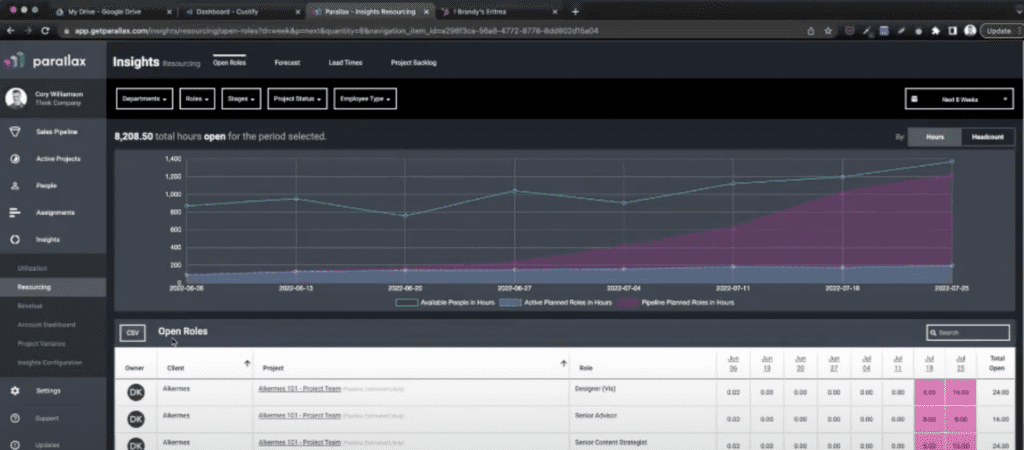The Shape of Projects to Come – Accurately Forecasting Resources and Revenue
“The Shape of Things to Come” is a work of science fiction by H.G. Wells and for some digital services firms, accurate forecasts of future resource needs feel like a work of science fiction as well.

At Parallax, we view resource requirements for individual projects as having a shape. Think of a line graph that plots the resources needed over time. Early in the project, design resource usage is high and then decreases a bit as development resources ramp up. While spreadsheets can do a decent job of tracking individual resources, current assignments and future availability relative to booked projects, adding forecasted sales into the mix is the alien in the room: something scary and unknown.
The most successful digital services firms put effort into adding more fidelity to the pipeline earlier in the sales process rather than later. However, for most organizations, resource forecasting relative to deals in the pipeline is based on a weighted revenue forecast coming from their CRM, not a resource plan. Fidelity requires including potential resource plans, i.e. resources over time with specific allocations. It also takes time and effort which is sometimes viewed as not justifiable early in the sales cycle when the probability of closing the deal is still low.

With Parallax, sales people can easily forecast projects in your CRM based on predefined service offerings that include an additional level of detail – the types, amounts, and timing of resources required to complete a specific type of project. These templates, or project shapes as we call them, represent the most common service offerings and are informed historical projects. Using templates to forecast projects results in more consistent and accurate project estimations.
These details not only result in more accurate resource forecasts, they give salespeople the information they need to have meaningful project scoping conversations with prospects earlier than the competition. Based on these conversations, the salespeople can consult with technical resources and solutions architects to adjust the “shape” of the projects when they’re in the pipeline which allows for more accurate forecasting and proactive resource allocation when the deal closes. This detail also provides much better insight into the impact of each opportunity, not just from a revenue perspective, but from a profitability perspective as well.
Once a project is in flight, the actual resources used rarely reflect the resource plan developed at the beginning of the project. The shape of the project shifts and changes as the work progresses. Some types of resources may have been underestimated, others overestimated. In an agile environment, the project scope may change as the details are better understood. Parallax allows resource and project managers to dynamically adjust the shape of active projects, giving greater visibility into resources that may be freed up earlier for other projects or additional resources that may be needed later on to complete the work.
At the end of the day, digital service organizations need the answer to two key questions. Do we have the backlog of work and team required to hit our revenue targets? And how confident are we that our current revenue projections are accurate?
To answer these questions requires layering the shapes of active projects to build an aggregated resource plan and then going beyond that to layer on the shapes of forecasted projects to understand resource requirements going forward, no easy task without a solution like Parallax. Also, updating and refining the shapes of active and forecasted projects is a dynamic process. Successful organizations typically refine higher probability deals (>50%) in the pipeline on a weekly basis as conversations progress with clients and as close dates become imminent.

Resource and revenue forecasting are not alien concepts to Parallax, it’s one of the purposes for which it was built. It helps organizations evolve resource planning from a function to resource forecasting as a way to successfully manage and grow the business.
